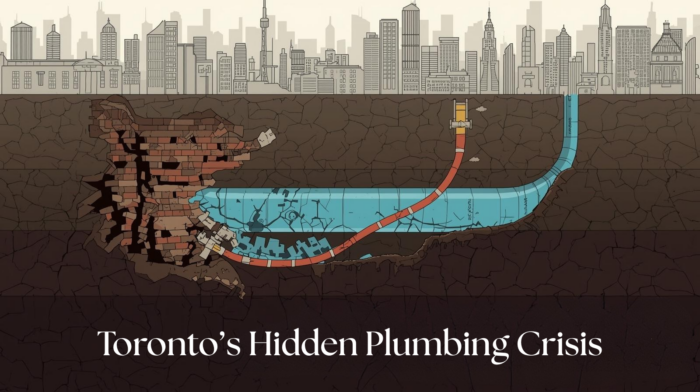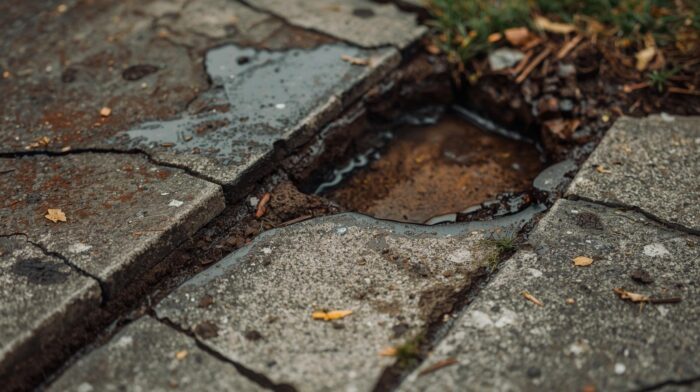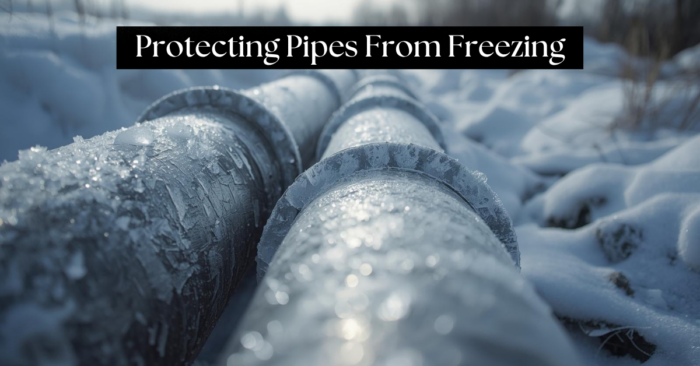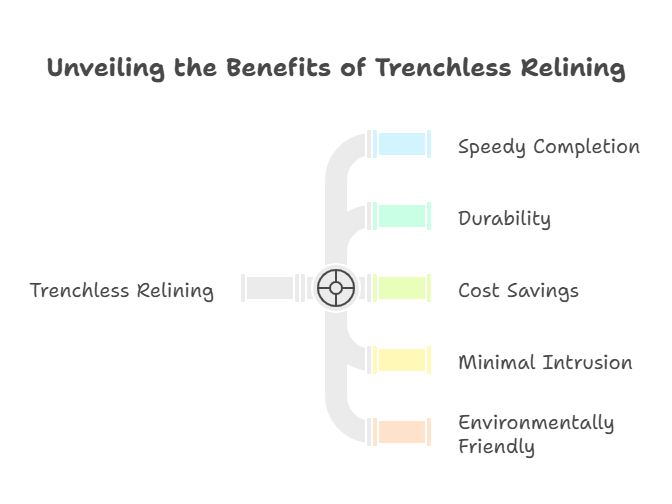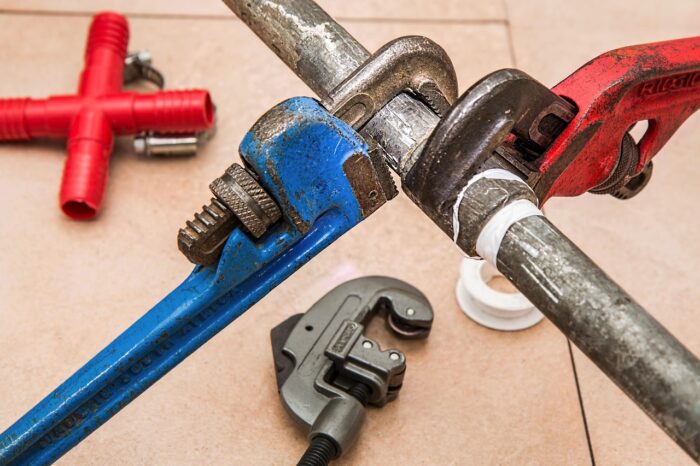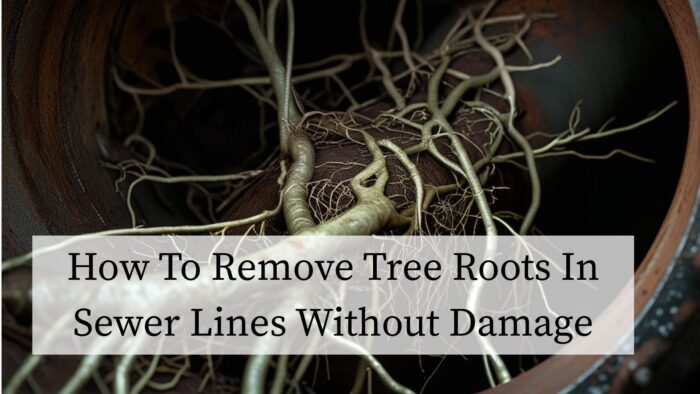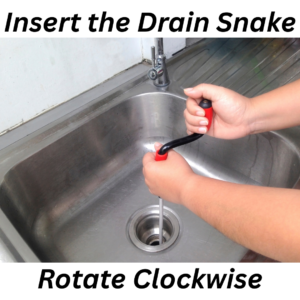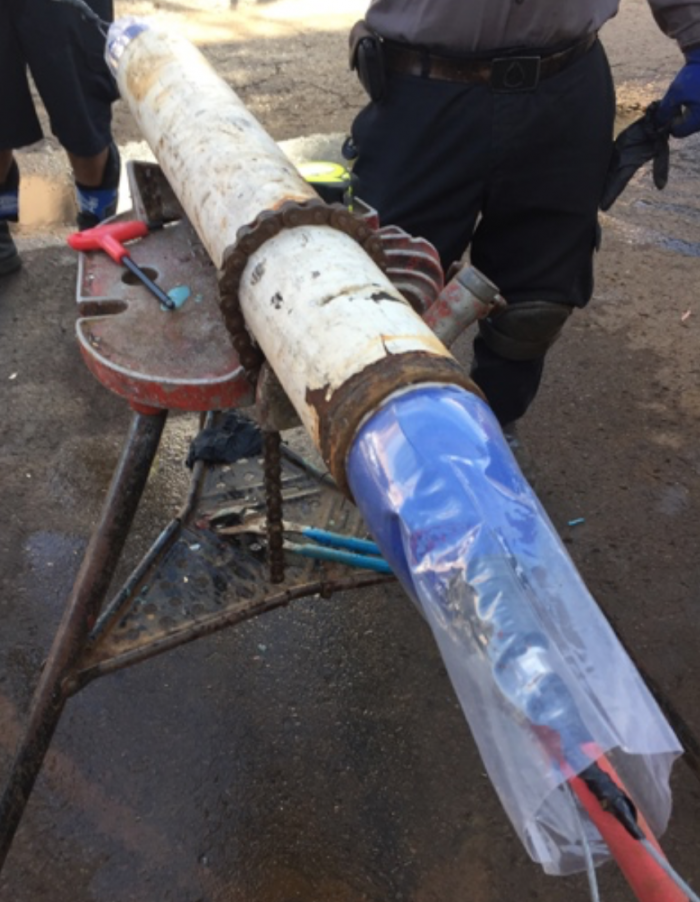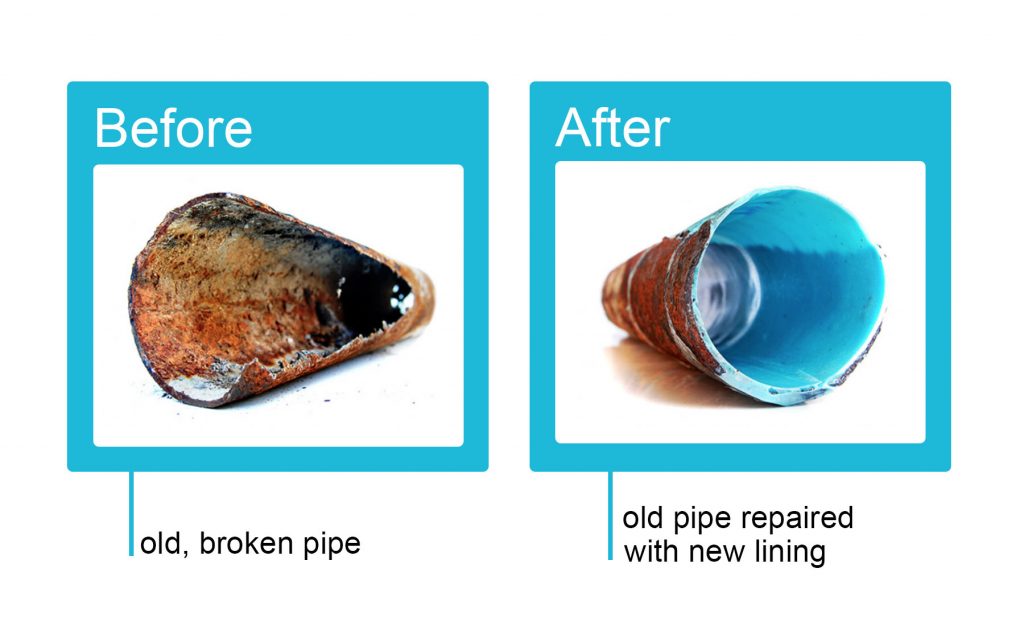Toronto’s Hidden Plumbing Crisis: Why CIPP Lining Is the Modern Solution for a City Built on 100-Year-Old Clay Pipes
Toronto’s Aging Home Stock (Many Over 80–120 Years Old)
Toronto has no shortage of beautiful, historic neighborhoods. Areas like The Annex, Riverdale, Cabbagetown, Parkdale, Leaside, Leslieville, and Rosedale are full of homes built between the late 1800s and early 1900s. Solid craftsmanship, gorgeous brickwork, big trees and very old plumbing.
From an Ontario Pipe Lining perspective, these neighborhoods represent some of the highest concentrations of original sewer infrastructure still in active use anywhere in the province.
Many of these homes are still running on original clay tile, cast iron, or galvanized steel drain pipes. At the time, these materials were standard. Today, they’re well past their intended lifespan. Clay cracks. Cast iron corrodes from the inside out. Galvanized steel flakes and restricts flow.
Add in Toronto’s mature tree canopy, especially in places like High Park or the Beaches and those old pipes become prime targets for root intrusion. This is often discovered only after repeated backups or emergency calls for drain cleaning Toronto, when the real issue is structural, not just a clog.
Toronto’s Dense Urban Layout Makes Excavation a Nightmare
Now let’s talk about space or the lack of it. Toronto wasn’t designed for modern excavation. Downtown lots are narrow. Row houses share walls. Front yards are sometimes barely wider than the front steps.
Then you’ve got commercial strips like Queen West, the Danforth, or Yonge Street, where digging up sidewalks or roads isn’t just inconvenient, it’s borderline impossible due to permits, traffic, and disruption.
Across Ontario, and especially in Toronto, pipe lining specialists see this daily: traditional sewer repair methods simply don’t match the realities of dense urban construction.
Traditional sewer repair often means ripping up floors, tearing out landscaping, or digging deep trenches through tight spaces. CIPP changes that completely. Because the liner is installed from within the existing pipe, excavation is either minimal or not required at all. For Toronto’s layout, that’s a massive advantage.
Toronto Soil & Climate Issues
Toronto’s climate doesn’t do aging pipes any favors. Freeze–thaw cycles are relentless. Water seeps into small cracks, freezes, expands, and slowly forces pipes to crack, shift, or collapse.
In areas closer to Lake Ontario, higher water tables increase external pressure on already weakened pipes, accelerating deterioration. And those beautiful maple and oak trees? Their root systems are aggressive and constantly searching for moisture, old clay pipes might as well send them an invitation.
From an Ontario-wide pipe lining standpoint, Toronto combines all the worst conditions: aging materials, aggressive roots, and climate stress happening simultaneously.
CIPP liners create a seamless, jointless pipe within the old one, cutting off entry points for roots and stabilizing the line against soil movement.
Commercial Properties Have Even More Pressure
If residential sewer issues are stressful, commercial ones are a whole different level. Toronto’s older commercial districts, St. Lawrence Market, Kensington Market, Chinatown, and even parts of the Financial District, often have sewer lines buried under concrete slabs, storefront floors, or tightly packed basements.
Excavation in these settings can shut down a business for days or even weeks. Lost revenue, unhappy customers, safety risks, it adds up fast.
Ontario Pipe Lining projects in Toronto’s commercial core consistently highlight why trenchless methods have become the preferred option for property managers and landlords.
CIPP allows many businesses to repair failing drains overnight or within a single day. For restaurants, cafés, and retail spaces, that difference is huge. It’s one of the main reasons more property managers are turning to trenchless solutions instead of traditional sewer repair.
CIPP Benefits Tailored Specifically to Toronto
CIPP isn’t just popular everywhere, it’s especially well-suited to Toronto’s unique challenges.
Here’s why it works so well locally and why Ontario Pipe Lining professionals recommend it so often in the GTA:
- No digging up historic streets or protected heritage landscapes
- Ideal for narrow lots and shared-wall homes
- Fast installation, often completed in one day
- Extends the life of old pipes by 50 years or more
- Permanently blocks tree root intrusion
- Highly resistant to corrosion, perfect for aging cast iron systems
It’s essentially a structural renewal, not a patch. And for a city full of century-old infrastructure, that matters.
Real Toronto Case Examples
To put it into perspective, here are a few real-world-style scenarios you’ll hear about across the city:
- A 100-year-old semi in Riverdale avoids a $30,000 excavation by lining the original clay sewer line instead of replacing it.
- A café in Kensington Market repairs its main drain overnight using CIPP and opens the next morning like nothing happened.
- A Victorian home in Cabbagetown preserves its front garden, brick walkway, and mature tree by choosing trenchless lining over digging.
In each case, the key step before lining was a sewer camera inspection, which confirmed the pipe’s condition and ensured CIPP was the right solution.
A Bit of Toronto Plumbing History
Here’s a fun (and slightly alarming) historical note: when many Toronto neighborhoods were first built, clay pipes were expected to last about 50 to 60 years. That means a lot of the city’s sewer infrastructure is now double its intended lifespan. Toronto is one of the clearest examples of a city where trenchless technology isn’t optional anymore, it’s necessary.
CIPP is essentially how Toronto is modernizing without tearing itself apart. It allows century-old systems to be upgraded internally, preserving the charm of historic neighborhoods while quietly solving serious infrastructure problems underground.
Why CIPP Is Becoming the #1 Choice
Between aging homes, dense construction, harsh climate conditions, and strict urban constraints, Toronto needed a better solution. CIPP fits that need almost perfectly. It’s why more homeowners, businesses, and even municipalities are turning to specialized CIPP companies instead of defaulting to excavation.
The pipes may be hidden, but the shift is very real. Toronto’s plumbing future isn’t about digging deeper, it’s about repairing smarter.
New CIPP Lining in Toronto: Frequently Asked Questions
How long will a cured-in-place pipe last?
A well-laid cured-in-place pipe (CIPP) liner should have a life span of 50 years or even more.
What are the shortcomings of cured-in-place pipe?
Some limitations include: It is not applicable to a pipe that has entirely collapsed or has lost large parts of it, pipe should be open to clean and inspect and then lined, diameter reduction is small but present (typically insignificant with residential applications), experienced professionals will have to install it to make sure it is cured and adhered properly.
Most Toronto homes have aging pipes that are not completely broken, merely cracked or infested by roots and thus are perfect candidates of CIPP.
What is the cure time of CIPP?
The majority of CIPP residential projects in Toronto are completed in one day. The actual process of curing is usually a few hours, and is dependent on the length of the pipes, the diameter of the pipes and the method of curing (hot water, steam or UV).
What is the Toronto Water Pipe Replacement Program?
Toronto Water Pipe Replacement Program is a city project aimed at assisting homeowners in the replacement of the public and domestic sections of the old water service pipes especially those composed of lead.

